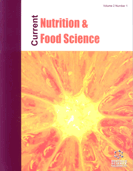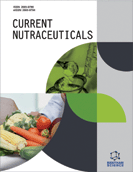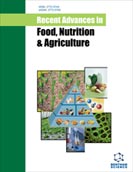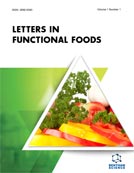Abstract
The azuki bean (Vigna angularis) has been one of the most important and traditional crops of East Asia, where it has long been cultivated. In Japan, the azuki bean is the second-most important legume after soybeans, and it is commonly used as an essential ingredient, e.g., seki-han, a festive rice dish and an, a sweetened bean paste. Azuki beans (V. angularis) have been known to contain proanthocyanidins, a group of polyphenolic bioflavonoids with remarkable radical-scavenging activities. However, little research has provided detailed discussion of the beneficial effects and physiological functions of azuki beans involved in human body. Based on our findings, the authors provide here evidence that azuki bean (V. angularis) extract — including the molecules therein, such as proanthocyanidins and/or dietary fibers — may play a role in suppressing increases of oxidative stress and macrophage infiltration in the kidneys of animal models with hypertension and hyperglycemia. Moreover, azuki bean (V. angularis) extract may affect the vascular and renal expressions of endothelial nitric oxide synthase, which contribute to nitric oxide production. This review aims to summarize findings concerning the beneficial and interesting effects of azuki beans, especially the physiological functions of azuki bean (V. angularis) extract in treating inflammation, hypertension, and diabetic nephropathy.
Keywords: Azuki bean (Vigna angularis), polyphenols, anti-oxidant properties, inflammation, hypertension, diabetic nephropathy
Current Nutrition & Food Science
Title: Beneficial Effects of Azuki Bean (Vigna angularis) Extract: Anti-Oxidant, Anti-Hypertension, and Treatment for Renal Damage
Volume: 5 Issue: 3
Author(s): Shin Sato, Yuuka Mukai and Jyoji Yamate
Affiliation:
Keywords: Azuki bean (Vigna angularis), polyphenols, anti-oxidant properties, inflammation, hypertension, diabetic nephropathy
Abstract: The azuki bean (Vigna angularis) has been one of the most important and traditional crops of East Asia, where it has long been cultivated. In Japan, the azuki bean is the second-most important legume after soybeans, and it is commonly used as an essential ingredient, e.g., seki-han, a festive rice dish and an, a sweetened bean paste. Azuki beans (V. angularis) have been known to contain proanthocyanidins, a group of polyphenolic bioflavonoids with remarkable radical-scavenging activities. However, little research has provided detailed discussion of the beneficial effects and physiological functions of azuki beans involved in human body. Based on our findings, the authors provide here evidence that azuki bean (V. angularis) extract — including the molecules therein, such as proanthocyanidins and/or dietary fibers — may play a role in suppressing increases of oxidative stress and macrophage infiltration in the kidneys of animal models with hypertension and hyperglycemia. Moreover, azuki bean (V. angularis) extract may affect the vascular and renal expressions of endothelial nitric oxide synthase, which contribute to nitric oxide production. This review aims to summarize findings concerning the beneficial and interesting effects of azuki beans, especially the physiological functions of azuki bean (V. angularis) extract in treating inflammation, hypertension, and diabetic nephropathy.
Export Options
About this article
Cite this article as:
Sato Shin, Mukai Yuuka and Yamate Jyoji, Beneficial Effects of Azuki Bean (Vigna angularis) Extract: Anti-Oxidant, Anti-Hypertension, and Treatment for Renal Damage, Current Nutrition & Food Science 2009; 5 (3) . https://dx.doi.org/10.2174/157340109789007117
| DOI https://dx.doi.org/10.2174/157340109789007117 |
Print ISSN 1573-4013 |
| Publisher Name Bentham Science Publisher |
Online ISSN 2212-3881 |
 13
13
- Author Guidelines
- Bentham Author Support Services (BASS)
- Graphical Abstracts
- Fabricating and Stating False Information
- Research Misconduct
- Post Publication Discussions and Corrections
- Publishing Ethics and Rectitude
- Increase Visibility of Your Article
- Archiving Policies
- Peer Review Workflow
- Order Your Article Before Print
- Promote Your Article
- Manuscript Transfer Facility
- Editorial Policies
- Allegations from Whistleblowers
- Announcements
Related Articles
-
Overexpression of a Modified Amaranth Protein in Escherichia coli with Minimal Media and Lactose as Inducer
Recent Patents on Biotechnology Treating Arterial Stiffness in Young and Elderly Patients with the Metabolic Syndrome
Current Pharmaceutical Design Towards the Management of Inflammation: Recent Developments of mPGES-1 Inhibitors
Recent Patents on CNS Drug Discovery (Discontinued) Transcranial Doppler Ultrasonography: Current Status
Current Medical Imaging Emerging Role of Apelin as a Therapeutic Target in Cancer: A Patent Review
Recent Patents on Anti-Cancer Drug Discovery Application of Decoy Oligonucleotides as Novel Therapeutic Strategy: A Contemporary Overview
Current Drug Discovery Technologies Possible Non-Classic Intracellular and Molecular Mechanisms of LDL Cholesterol Action Contributing to the Development and Progression of Atherosclerosis
Current Vascular Pharmacology Insulin-Like Growth Factor-1, a Potential Predicative Biomarker for Postoperative Delirium Among Elderly Patients with Open Abdominal Surgery
Current Pharmaceutical Design Molecular Counting of Captopril by a Microfluidic Chip-Thermal Lens Microscopy System
Current Analytical Chemistry An Impact of Lifestyle Modification on Insulin Resistance in Hypertensive Patients with Metabolic Syndrome
Current Hypertension Reviews Treatment of the Motor and Non-Motor Symptoms in Parkinson's Disease According to Cluster Symptoms Presentation
Current Drug Targets Management and Treatment of Cardiovascular Diseases in the Elderly
Current Pharmacogenomics and Personalized Medicine The Role of microRNAs in the Initiation and Progression of Stable Atheromatous Plaque
Current Pharmaceutical Design Editorial: Preeclampsia-Eclampsia, Time to Act and Time to Deepen Research
Current Women`s Health Reviews The Status of Disease Registries in the United States: Reflections
Applied Clinical Research, Clinical Trials and Regulatory Affairs Antihypertensive Therapy: Role of Aldosterone Antagonists
Current Pharmaceutical Design Editorial: Management of Elevated Heart Rate in Essential Hypertension: Pathophysiological Insights and Therapeutic Approach
Current Pharmaceutical Design Does the Acupoint Specificity Exist? Evidence from Functional Neuroimaging Studies
Current Medical Imaging Risk Factors for Development of Heart Failure
Current Cardiology Reviews Innovative Strategy in Treating Angina Pectoris with Chinese Patent Medicines by Promoting Blood Circulation and Removing Blood Stasis: Experience from Combination Therapy in Chinese Medicine
Current Vascular Pharmacology





















